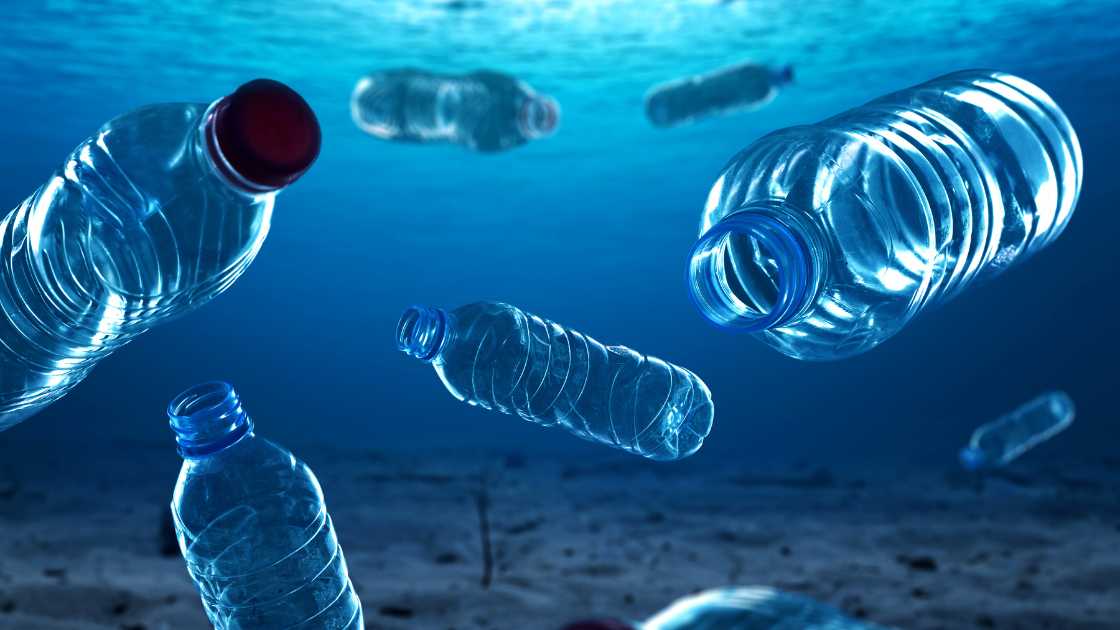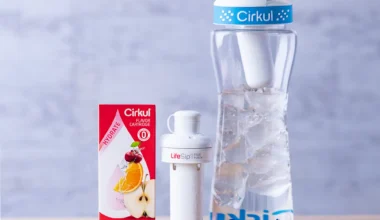Ever grab a bottle of water on a hot day and wonder just how much hydration you’re holding in your hands? Let’s dive into the depths of this conundrum together.
How many ounces are in that store-bought plastic water bottle?
“H2O, the secret elixir of life – how much of you do I hold?”
It’s a question that has undoubtedly crossed your mind during those hazy, parched moments. The answer might surprise you, or it might not. Either way, let’s take a refreshing sip of knowledge together.
What is the standard size of a plastic water bottle?
size of a plastic water bottle while sipping on your H2O? Well, you’re in for a treat! The go-to size for a typical plastic water bottle in the U.S. is 16.9 fluid ounces – that’s roughly 500 milliliters if you’re more into the metric system.
But hold your horses! It’s not the only size you’ll encounter out there in the wild world of hydration. Let’s dive a bit deeper, shall we?
- Mini: Starting small, we have the cute and compact mini bottles. These little guys hold about 8 ounces of water. Perfect for a quick thirst quencher, or for the kiddos’ lunchboxes.
- Standard: Next, we have our aforementioned standard size. At 16.9 ounces, it’s the Goldilocks of water bottles – not too small, not too large, just right!
- Large: Feeling extra parched? The large water bottles hold around 33.8 ounces (1 liter) of water. Ideal for those hot summer days or after a killer workout.
So, the next time you grab a plastic water bottle, you’ll know exactly what you’re getting. Size does matter, after all! Stay hydrated, folks!
The Importance of Knowing How Many Ounces are in a Plastic Water Bottle
Ever wondered why it’s essential to know how many ounces are in that plastic water bottle you’re sipping from? Well, sit tight, and let’s dive into the enlightening world of ounces and water bottles.
Firstly, hydration is a big deal. It’s that invisible hand, guiding your body’s health, and keeping you sharp and energetic. Knowing the exact ounces in your water bottle helps you track your hydration levels accurately, ensuring you’re drinking enough to keep your body happy and humming.
- Monitoring water intake: A well-hydrated body is a well-oiled machine. Keeping track of ounces consumed helps maintain optimal hydration.
- Health and wellness: Monitoring your hydration can aid in weight loss, maintain healthy skin, and prevent headaches.
- Exercise and recovery: For fitness enthusiasts, knowing the ounces in your bottle is crucial. It helps replenish the fluids lost during a sweaty workout session.
Now, let’s take a stroll down memory lane to elementary school math. Remember fluid ounces? If you’re scratching your head, don’t worry. Here’s a refresher: One fluid ounce of water weighs approximately one ounce. So, when we talk about ounces in a water bottle, we’re talking about the volume of water it can hold.
| Common Water Bottle Sizes | Ounces |
|---|---|
| Small size water bottle | 12 to 16.9 ounces |
| Medium size water bottle | 20 ounces |
| Large size water bottle | 24 to 32 ounces |
| Extra large size water bottle | 40 to 64 ounces |
So there you have it, an insight into the ounces in your water bottle. But remember, this is just a general guide. Bottle sizes can vary between brands and designs. So, when in doubt, check the label or the bottom of the bottle.
Stay hydrated, stay healthy, and keep counting those ounces!
How many ounces are in a typical plastic water bottle?
Have you ever paused and pondered, “Just how many ounces are in this plastic water bottle I’m holding?” If so, you’re in good company! This question isn’t as straightforward as you might think, given the variety of bottle sizes available on the market.
The standard size for a plastic water bottle in the US is 16.9 ounces, which is roughly 500ml if you’re more familiar with the metric system. This size is popular due to its perfect balance between portability and sufficient hydration.
- A smaller, compact option is the 8-ounce bottle. It’s ideal for quick hydration on the go, or for kids’ lunchboxes.
- Then there’s the hefty 24-ounce bottle, often preferred by athletes and gym-goers who need to guzzle more H2O during their workout sessions.
- The king of the jungle, however, is the 33.8-ounce (1 liter) bottle. This behemoth is favored by serious hydrators, or those planning to spend a lengthy period away from a water source.
Of course, these sizes are not set in stone, and you’ll sometimes find bottles that break the mold, such as the incredibly handy 12-ounce bottles or the colossal 50-ounce jugs. Ah, the diversity of hydration!
When you’re choosing your plastic water bottle, remember to consider both your hydration needs and the impact on the environment. Consider reusable options, because every little bit helps in our collective push towards sustainability.
What is the Standard Size of a Plastic Water Bottle?
Ever wondered about the size of that trusty plastic water bottle you tote around? Well, let’s dive into the nitty-gritty. The standard size for a plastic water bottle in the United States is 16.9 fluid ounces, which equates to 500 milliliters. That’s about two cups of water, folks!
Little Fun Fact: The standard bottle size came about as a result of the metric system. Europe, where the metric system is used, initially set the standard of 500 ml, and the US simply followed suit. Talk about international influence!
Keep in mind, though, that this is the standard size. Bottled water can come in a variety of sizes, ranging from small 8-ounce bottles to large 1-gallon jugs.
- 8-ounce bottle: Perfect for lunchboxes or a quick thirst quench on the go.
- 16.9-ounce bottle: The standard, most commonly seen in vending machines and supermarkets.
- 1-gallon jug: Ideal for those lengthy road trips or a day at the beach.
So, next time you pick up that plastic water bottle, spare a thought for the story behind its size. It’s more fascinating than you might think!
Different Sizes of Plastic Water Bottles and Their Capacity
So, you’re curious about the various sizes of plastic water bottles and their capacity, huh? Well, you’re in the right spot! Let’s dive into the world of ounces, measurements, and hydration.
First off, it’s essential to note that the capacity of plastic water bottles can vary greatly. They can range from petite, single-serving sizes to larger, multi-serving sizes fit for a thirsty crowd!
A Quick Glance at Common Sizes
- 8 ounces: The mini-me of water bottles. These are popular in hotels and are perfect for a quick sip on the go.
- 16.9 ounces: This is your typical, single-serving water bottle. It’s the one you’re likely to find in any convenient store or vending machine.
- 33.8 ounces: Also known as the one-liter bottle. It’s a sizable option for those with a heftier hydration need.
The Less Common but Still Important
- 50.7 ounces: The big kahuna! This is your 1.5-liter bottle. A favorite among athletes and outdoorsy folks.
- 101.4 ounces: The king of all plastic water bottles. This three-liter beast is not for the faint of heart (or the weak of arm).
There you have it! These are the most common sizes you’ll find when you’re looking to quench your thirst. Remember, staying hydrated is key, so pick the size that fits your lifestyle best and keep that water flowing!
Reading the Labels: Understanding How Much Water is in Your Bottle
Ever wonder just how much water you’re downing with each swig from your trusty plastic water bottle? Well, my friends, the answer lies right under your nose, or rather, your fingertips. That’s right – the key to this hydration puzzle is in the label.
Labels are like the secret decoder rings of the beverage world. They provide a wealth of information about what we’re imbibing, including the grand total of ounces we’re adding to our daily hydration count.
Most plastic water bottles sold in the United States come in three standard sizes: 16.9 ounces, 20 ounces, and 1 liter (33.8 ounces). These sizes are more than just numbers – they’re your ticket to understanding your hydration levels.
| Size | Ounces |
|---|---|
| Small | 16.9 |
| Medium | 20 |
| Large | 33.8 |
Reading bottle labels isn’t rocket science, but it’s an art form in its own right. Practice interpreting these details, and you’ll be a hydration champion in no time. Remember, staying hydrated is crucial for maintaining a healthy lifestyle. So, drink up, and don’t forget to recycle!
Calculating Your Daily Water Intake: How Many Bottles Should You Drink?
Before we dive into the specifics of ounces and water bottles, let’s take a moment to consider something incredibly important – your daily water intake! You’ve probably heard the advice “drink eight glasses of water a day,” right? But let’s be real, who has time to count glasses? That’s where water bottles come in as a convenient option.
Now, you might be thinking, “How many bottles of water should I drink for my daily intake?”. Let’s spill the tea… I mean, water on that, shall we?
Understanding Your Personal Hydration Needs
First, you need to know that the ‘8-glasses-a-day’ rule is more of a guideline than a one-size-fits-all solution. Factors like your age, gender, activity level and overall health play vital roles in determining your personal hydration needs.
Let’s Do Some Water Bottle Calculations
Alright, it’s time to do some math. Don’t worry, we’ll keep it simple. Imagine your standard plastic water bottle is 16.9 ounces (which is indeed the most common size you’ll find). If we stick with the 64-ounce daily recommendation (that’s the infamous 8 glasses, with each glass being 8 ounces), you’ll need to finish about 3.8 bottles a day. Yes, I know that’s not a whole number, but hydration isn’t supposed to be a dry subject!
Final Hydration Thoughts
Remember, every “body” is unique and so are its hydration needs. Always listen to your body and hydrate accordingly. Happy sipping!
How to Choose the Right Size Water Bottle for Your Needs
Picture this: you’re on a quest. Your mission? To find the perfect plastic water bottle. But what size should you choose? Let’s dive in.
First off, think about your hydration needs. Do you plan to use your bottle for intense workouts, or is it just for sipping throughout the day? For the gym goers and marathon runners among us, a larger bottle may be your best bet. Think 32 ounces or more! This ensures you won’t run out of water when you need it most.
On the other hand, if you’re looking for a bottle to keep on your desk, a smaller size might be more suitable. A 16-ounce bottle is compact, easy to carry, and provides enough water to keep you hydrated between refills.
Remember, the key to hydration is frequency, not quantity. It’s better to sip small amounts throughout the day than to gulp down a large amount all at once!
Next, consider convenience. If you travel or commute a lot, a lighter, smaller bottle might be easier to tote around. But if you’re mostly at home or in the office, a larger bottle won’t be such a burden.
Finally, think about your personal style. Do you want a bottle that’s sleek and modern, or one that’s vibrant and colorful? The choice is yours!
- Tip: Don’t forget to consider the weight of the water in addition to the weight of the bottle. Water weighs about 8.34 pounds per gallon, or about 0.065 pounds per ounce. So a 32-ounce bottle will weigh over two pounds when full!
Choosing the right-sized water bottle may seem like a minor decision, but it can make a major difference in your hydration habits. So choose wisely, friends. And happy hydrating!
The Advantages and Disadvantages of Different Sized Plastic Water Bottles
Ever felt parched and wondered, “How many ounces are this water bottle going to quench?” Let’s dive into the pool of knowledge and swim through the ups and downs of different sized plastic water bottles!
Advantages:
- Hydration Station: A larger bottle, say 33.8 ounces or 1 liter, means more water and less frequent refills. Great for all-day hydration!
- Stay in Shape: Water consumption can aid weight loss. A 16.9-ounce bottle, about half a liter, can be a handy weight-watcher’s companion.
- Travel Friendly: A mini, 8-ounce bottle fits perfectly in purses, lunchboxes, and small bags. Never be without water on the go!
Disadvantages:
- Weighty Matters: Larger bottles can be bulky and heavy, making them less portable.
- Environmental Impact: Smaller, disposable bottles can lead to more waste. Think green when hydrating!
- Missing Out: With an 8-ounce bottle, you might not be drinking enough water for optimal health.
So, there you have it, the highs and lows of different sized water bottles. Remember, it’s not just about quenching your thirst, but also about meeting your hydration needs in the most convenient and eco-friendly way possible. So the next time you’re reaching for a plastic water bottle, consider, “How many ounces are in this bottle, and is it the right size for me?”
What is the weight of a plastic water bottle?
Well, my friends, if you’re wondering about the weight of your trusty plastic water bottle, you’ve come to the right place. This question is a bit like asking how long is a piece of string, but don’t worry, we’ll untangle it for you.
First off, let’s clear up a common misconception. The weight of the bottle itself is negligible, usually around 15 grams, or about half an ounce. So when we talk about the weight of a water bottle, we’re really asking, how much does the water inside weigh?
- 8-ounce bottle: This little guy is easy to carry around, you’ll hardly notice the weight. It’s the equivalent of half a cup of water, or 0.5 pounds.
- 16-ounce bottle: This is your standard, single-serve water bottle size. It’s equal to 1 pound, so it’s like carrying around a small loaf of bread.
- 32-ounce bottle: Here’s where we start to feel the weight. It’s equivalent to 2 pounds, or about the weight of a quart of milk.
- 64-ounce bottle: Now we’re getting serious. A 64-ounce bottle weighs 4 pounds, which is about the same as a half-gallon of milk or a typical pineapple. Better hit the gym!
So next time you pick up a water bottle, you’ll know just how much weight you’re adding to your backpack. Remember, staying hydrated is important, but so is a healthy back!
What is the difference between a plastic water bottle and a reusable water bottle?
Let’s kick this off by imagining a typical plastic water bottle and a sturdy reusable one. They may both hold water, but oh boy, they’re as different as chalk and cheese! The plastic water bottle is like a one-hit-wonder song; it’s designed for one use and then it’s done. It typically holds 16.9 ounces of water. A lightweight and convenient option especially for those on the go.
Now, on the other hand, the reusable water bottle is more like your favorite classic rock anthem, it’s built to last! Most reusable water bottles hold between 12 to 32 ounces of water. They are generally more sturdy, designed for longevity and can be refilled countless times – a true friend to the environment.
But wait, there’s more! Let’s really dive into the differences:
- Material: Plastic bottles are made from, well, plastic, while reusable bottles can be made from a variety of materials including stainless steel, glass, and safe, BPA-free plastics.
- Environmental impact: Single-use plastic bottles contribute to plastic waste, while reusable bottles help in reducing this impact.
- Temperature retention: Many reusable bottles can keep your drink cold (or hot) for hours, while plastic bottles, not so much.
So, whether you’re a fan of the one-hit-wonder or more into classic rock, remember – staying hydrated is key! Choose wisely.
How to Stay Hydrated Throughout the Day with the Right Sized Plastic Water Bottle
Staying hydrated is like a dance. It’s all about rhythm, timing, and of course, the right partner—a perfectly sized plastic water bottle! But how many ounces does your dance partner hold? Let’s twirl into the details, shall we?
Standard Size: A Classic Dance
The most common plastic water bottle you’ll find pirouetting on store shelves holds 16.9 ounces or 500 milliliters. That’s equivalent to two cups or a pint of water, enough to keep your hydration two-step in sync.
The Dance of Sizes
But there’s a whole dance troupe of plastic water bottle sizes out there, each with their unique steps and spins.
- Mini Bottles: These cute little bottles hold around 8 ounces of water. Tiny but mighty, they’re perfect for a quick hydration jig.
- Medium Bottles: A bit more substantial, these bottles hold about 20 ounces. They’re great for a longer hydration waltz throughout the day.
- Large Bottles: These big bottles can contain 32 ounces. Ideal for a day-long hydration foxtrot, especially on those hot, sweaty days.
Know Your Hydration Moves
It’s also essential to know your hydration choreography. The average person needs around 64 ounces of water a day. That’s about four standard water bottles or two large ones. But remember, everyone’s hydration routine varies.
So, there you have it! Whether you’re twirling with a petite mini, swaying with a medium, or grooving with a large, knowing how many ounces are in your plastic water bottle is the first step to staying hydrated. Now, shall we dance?






